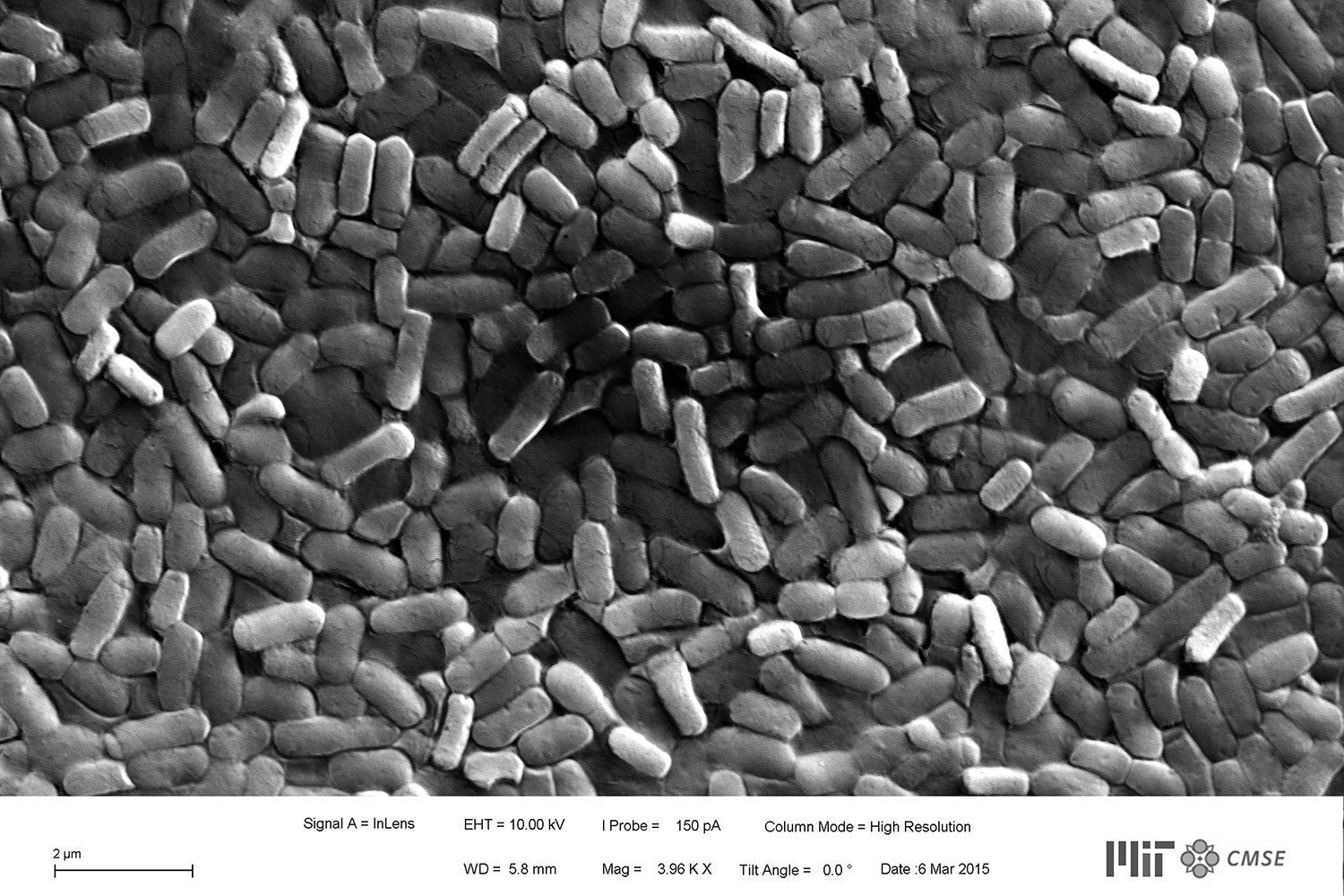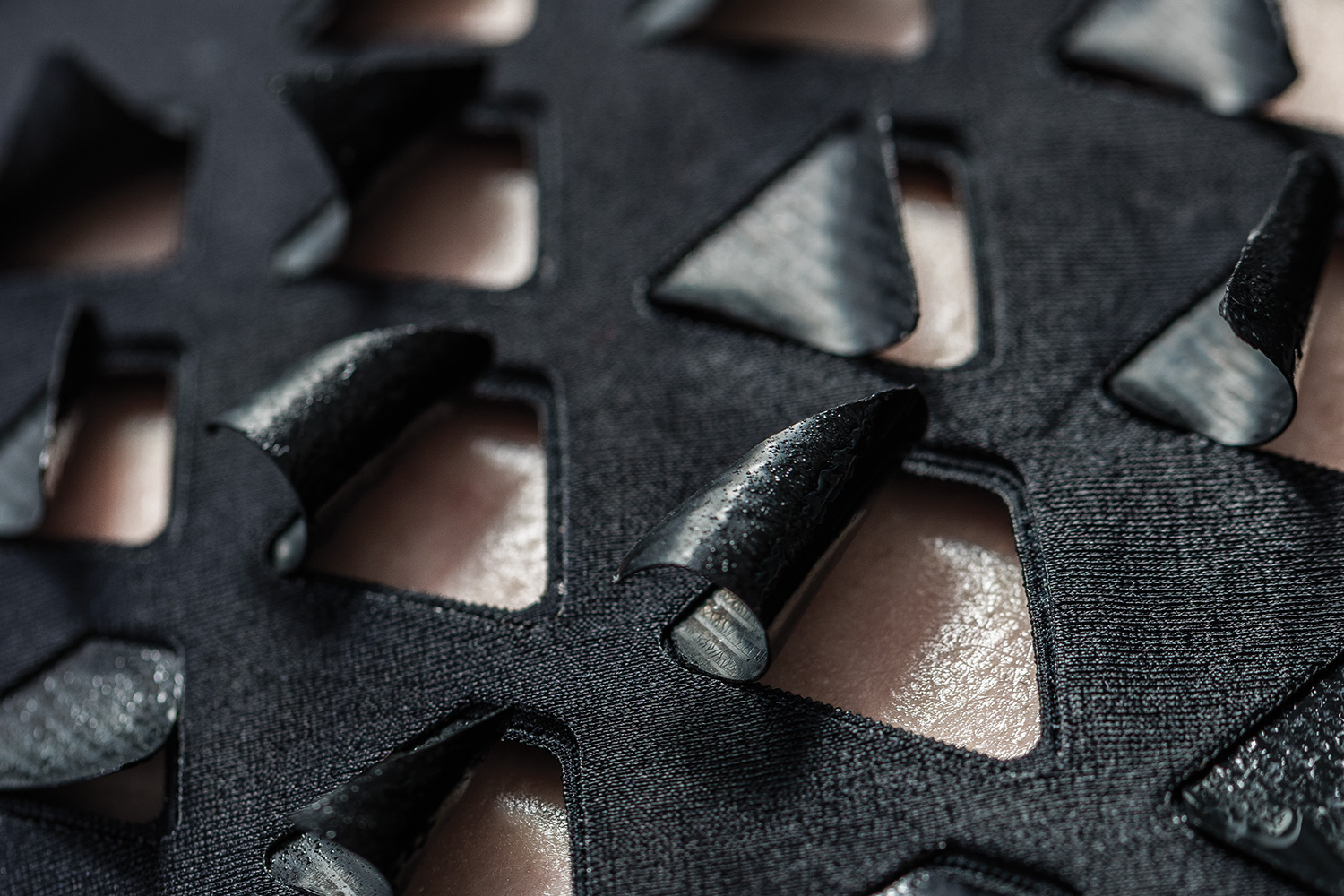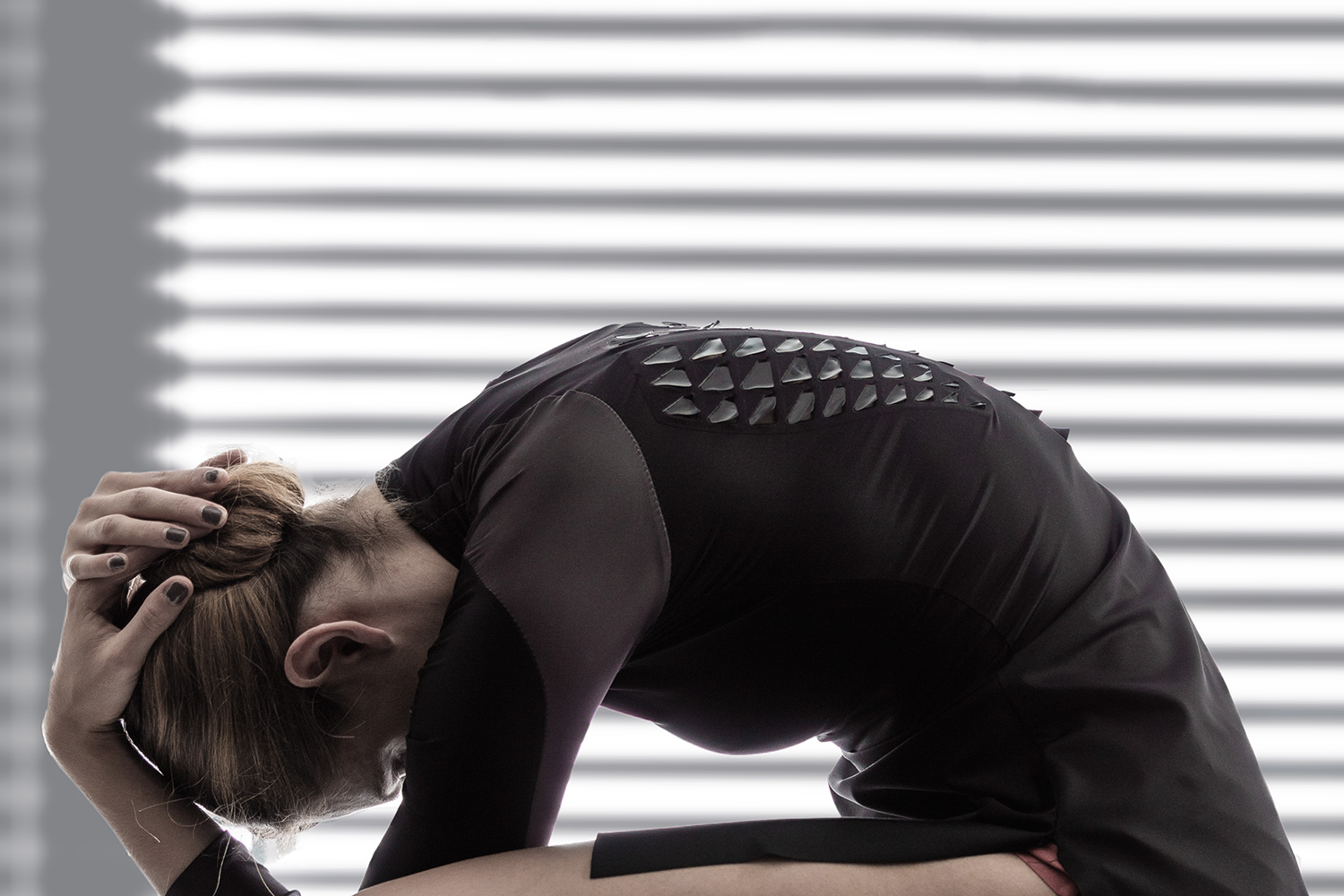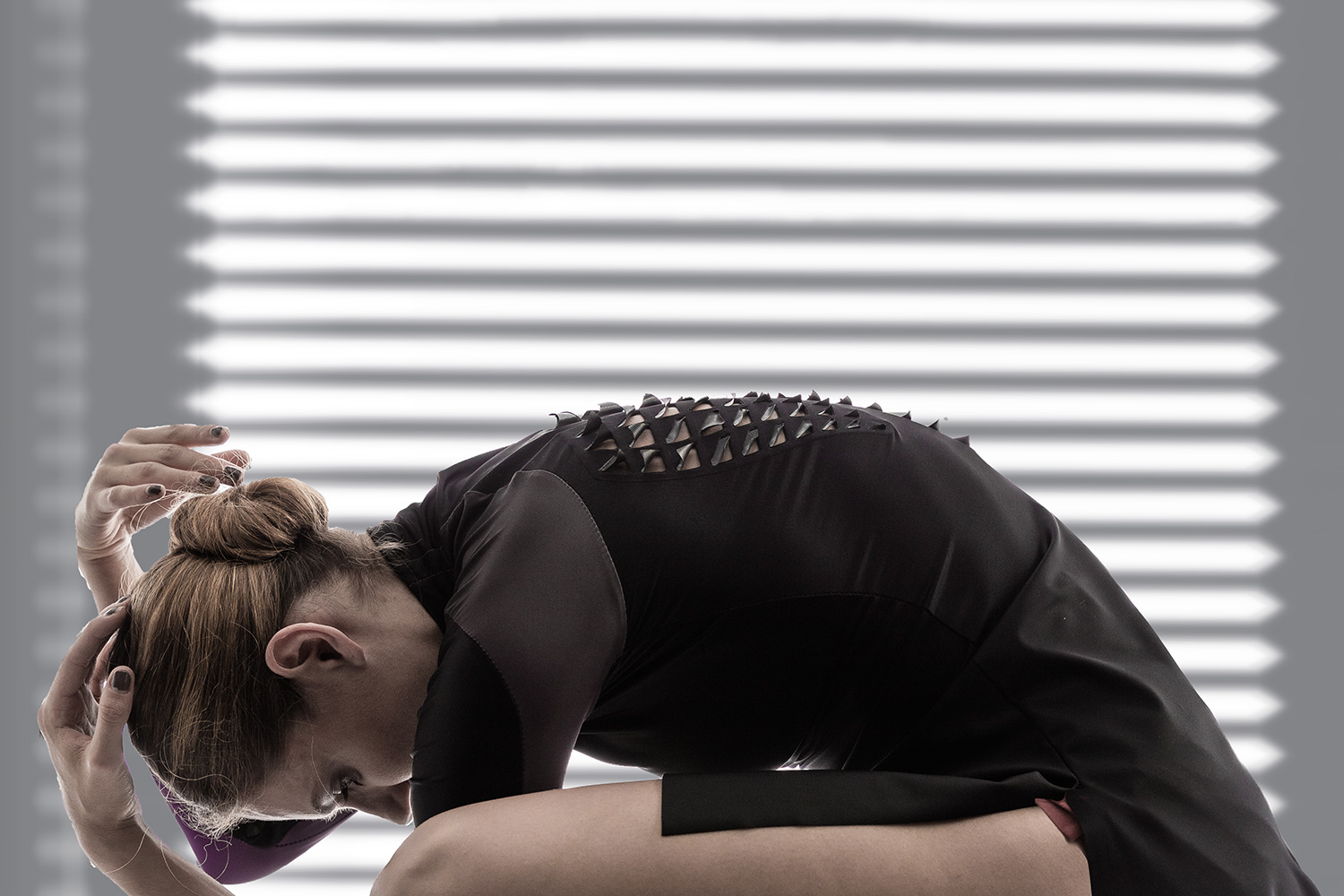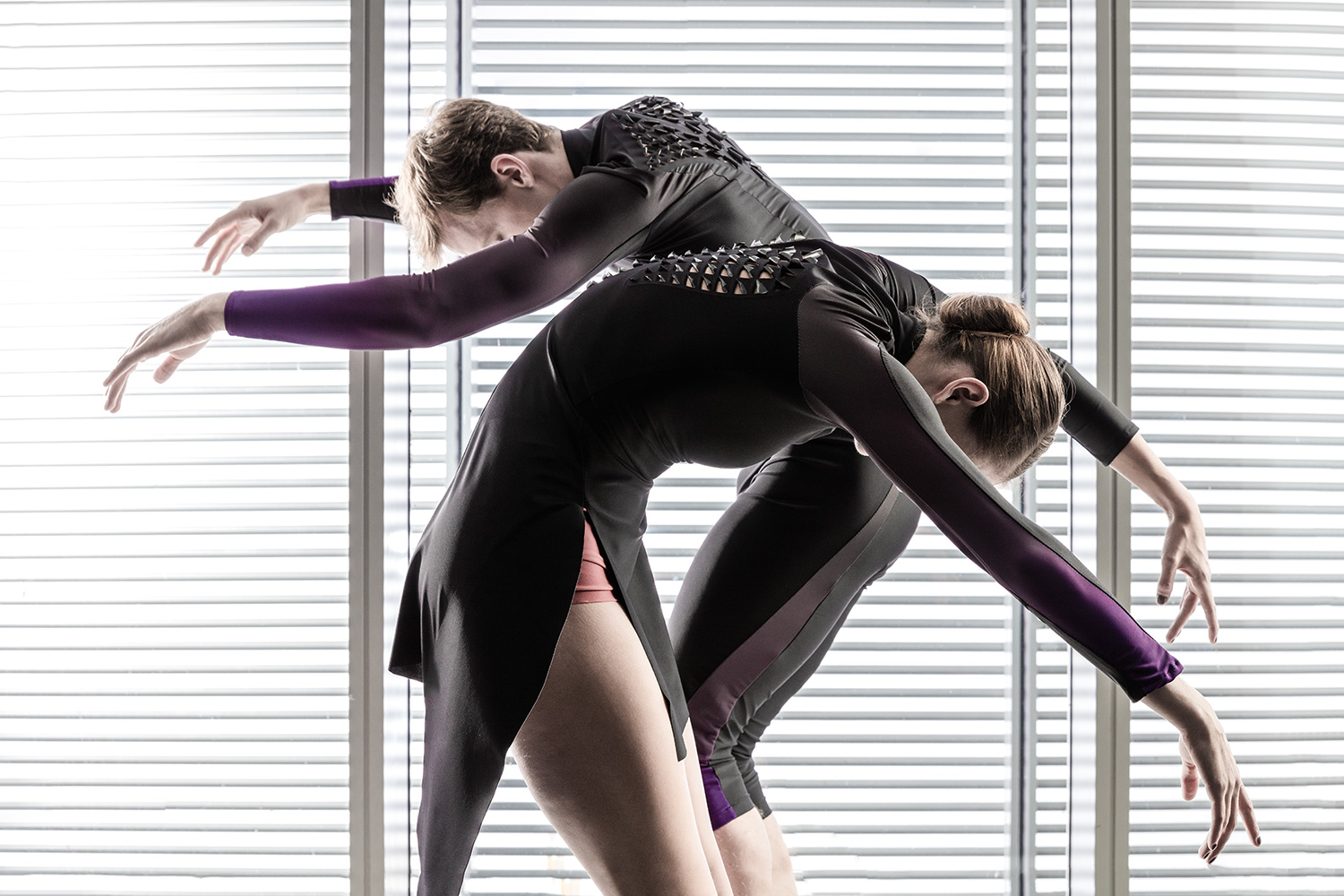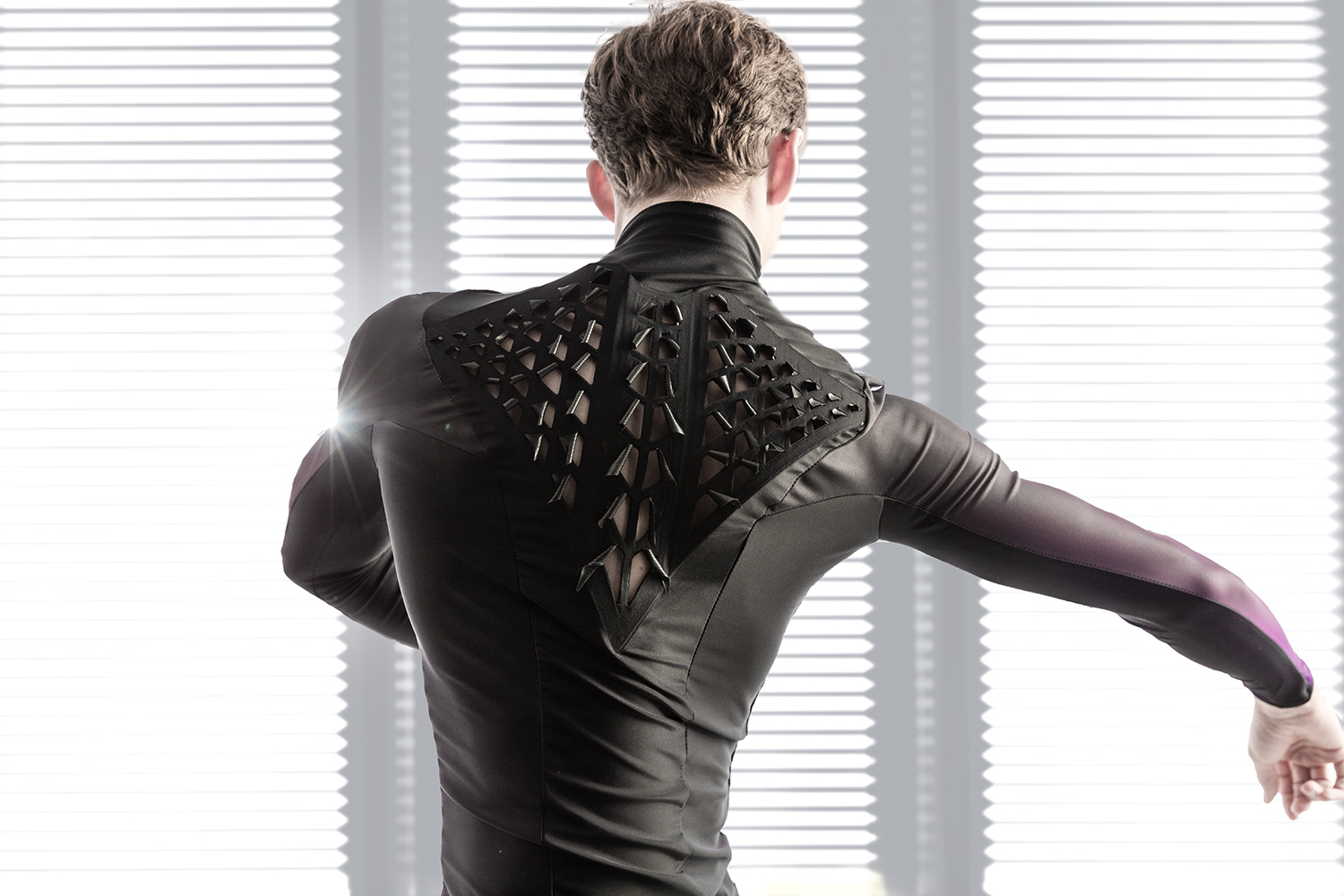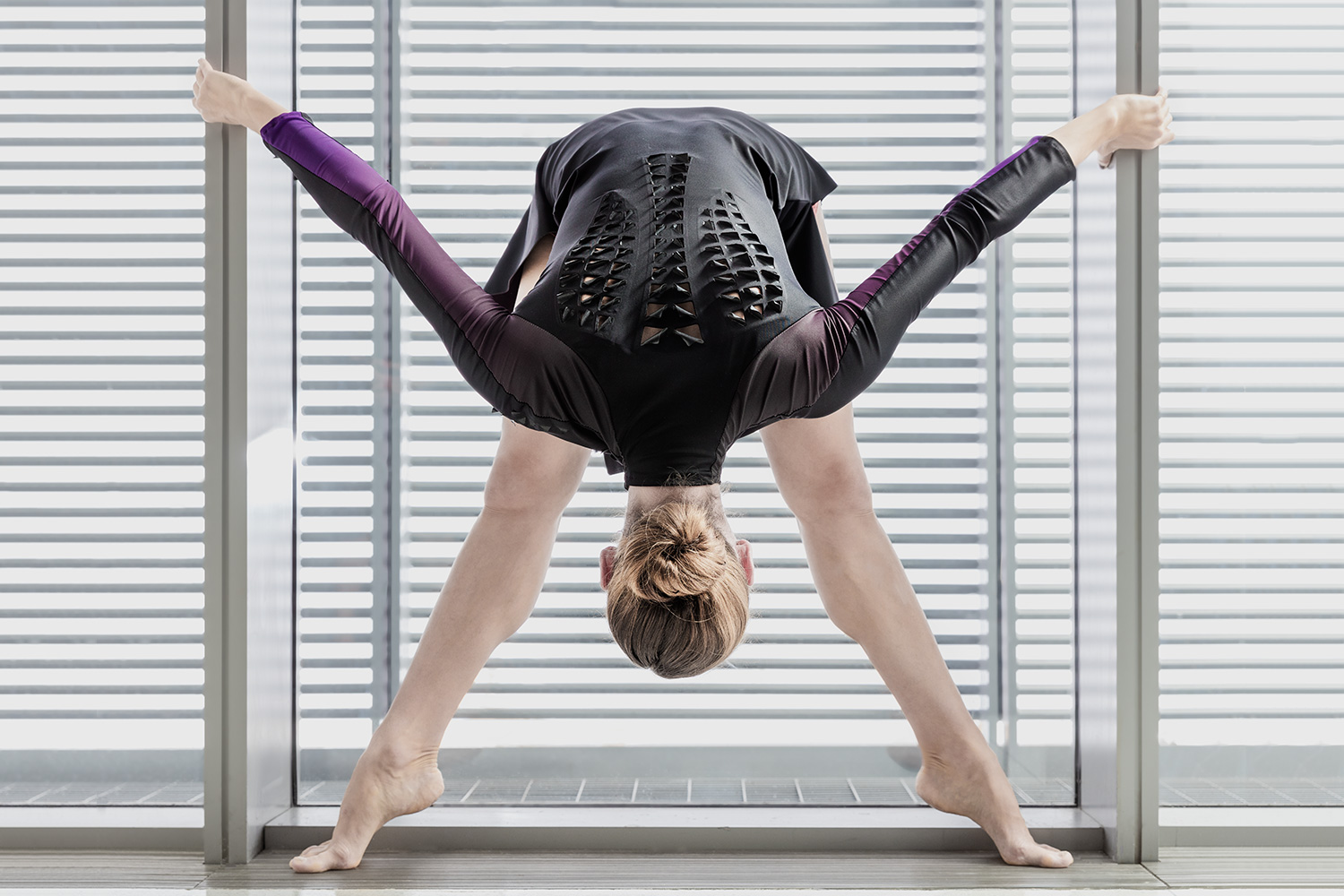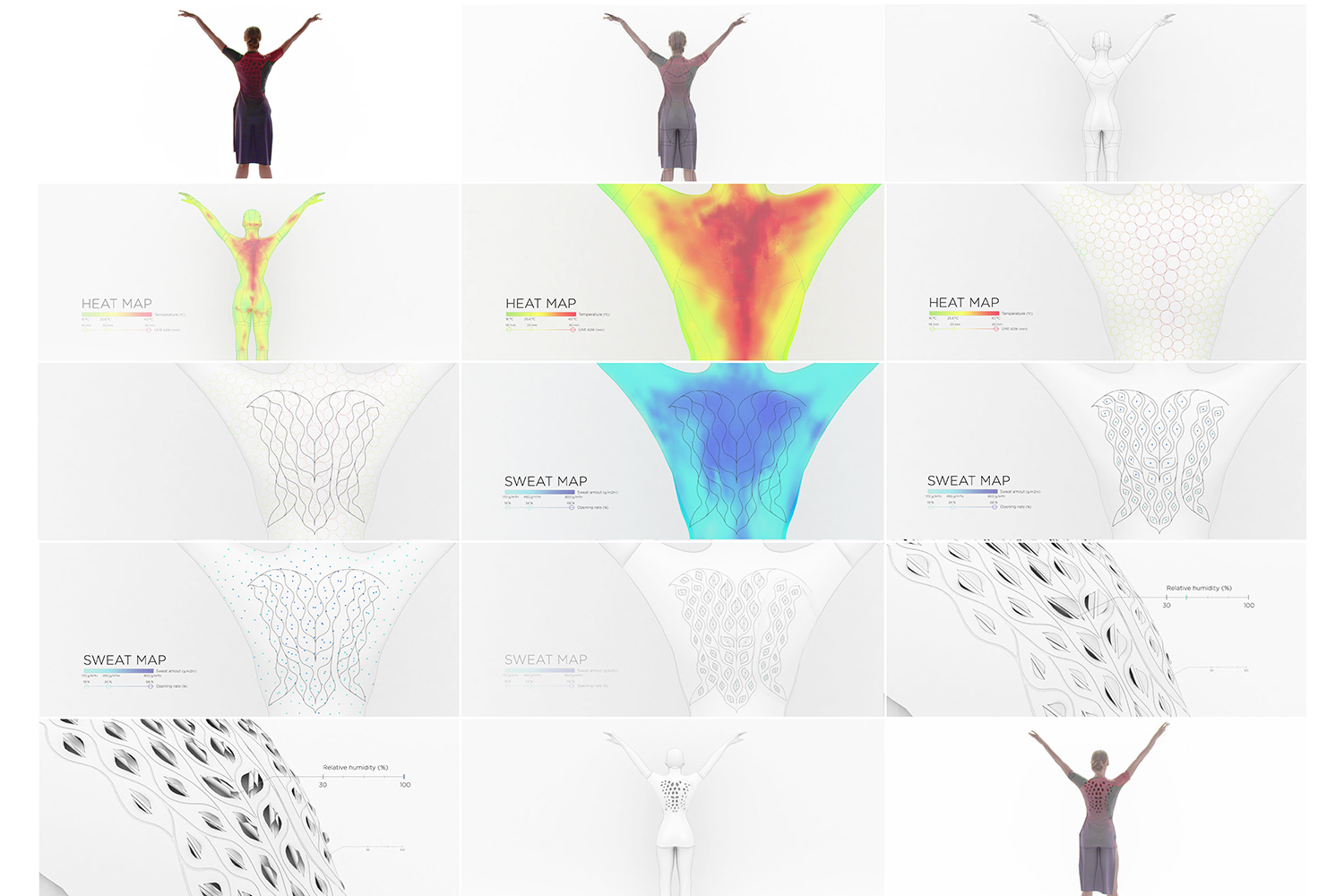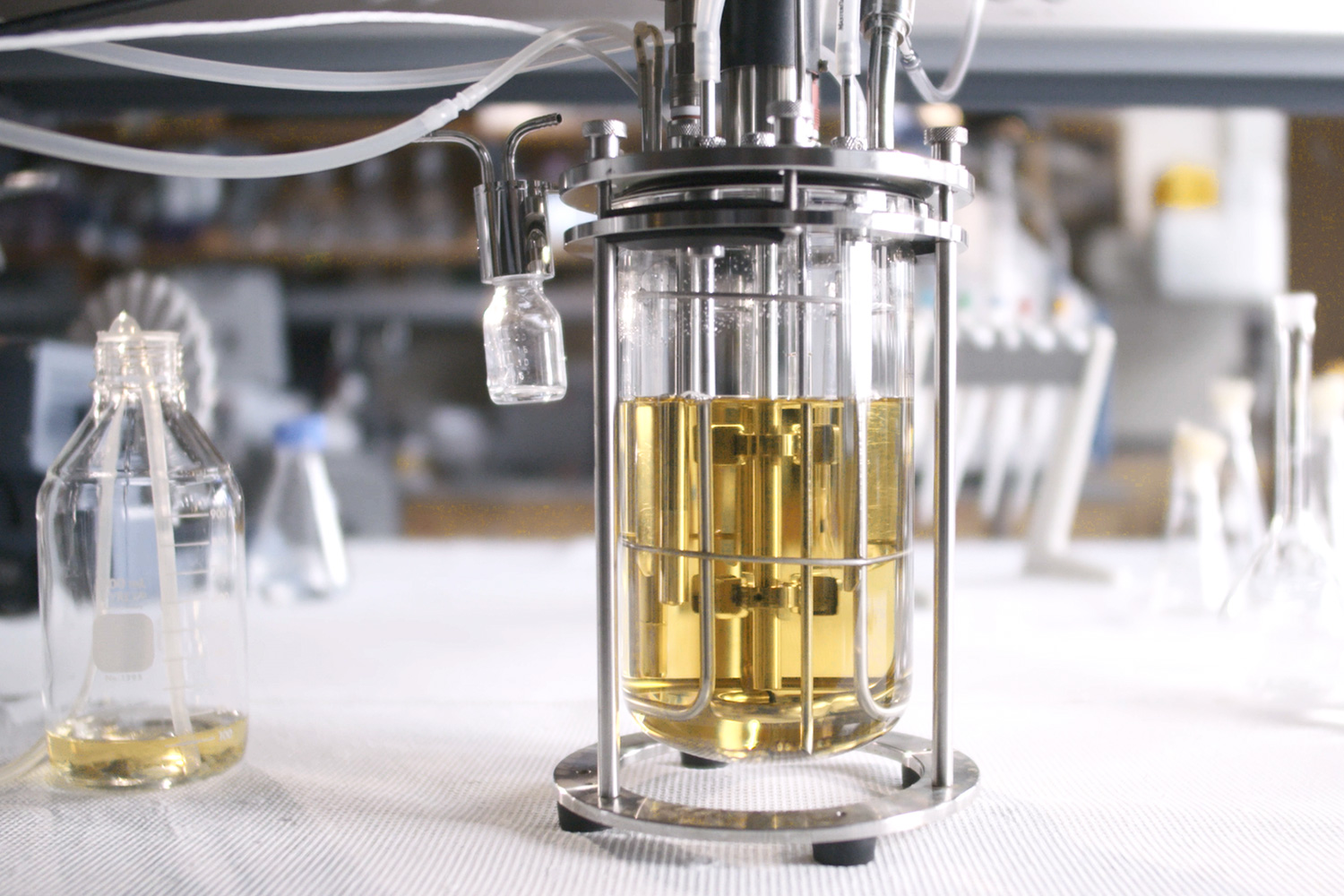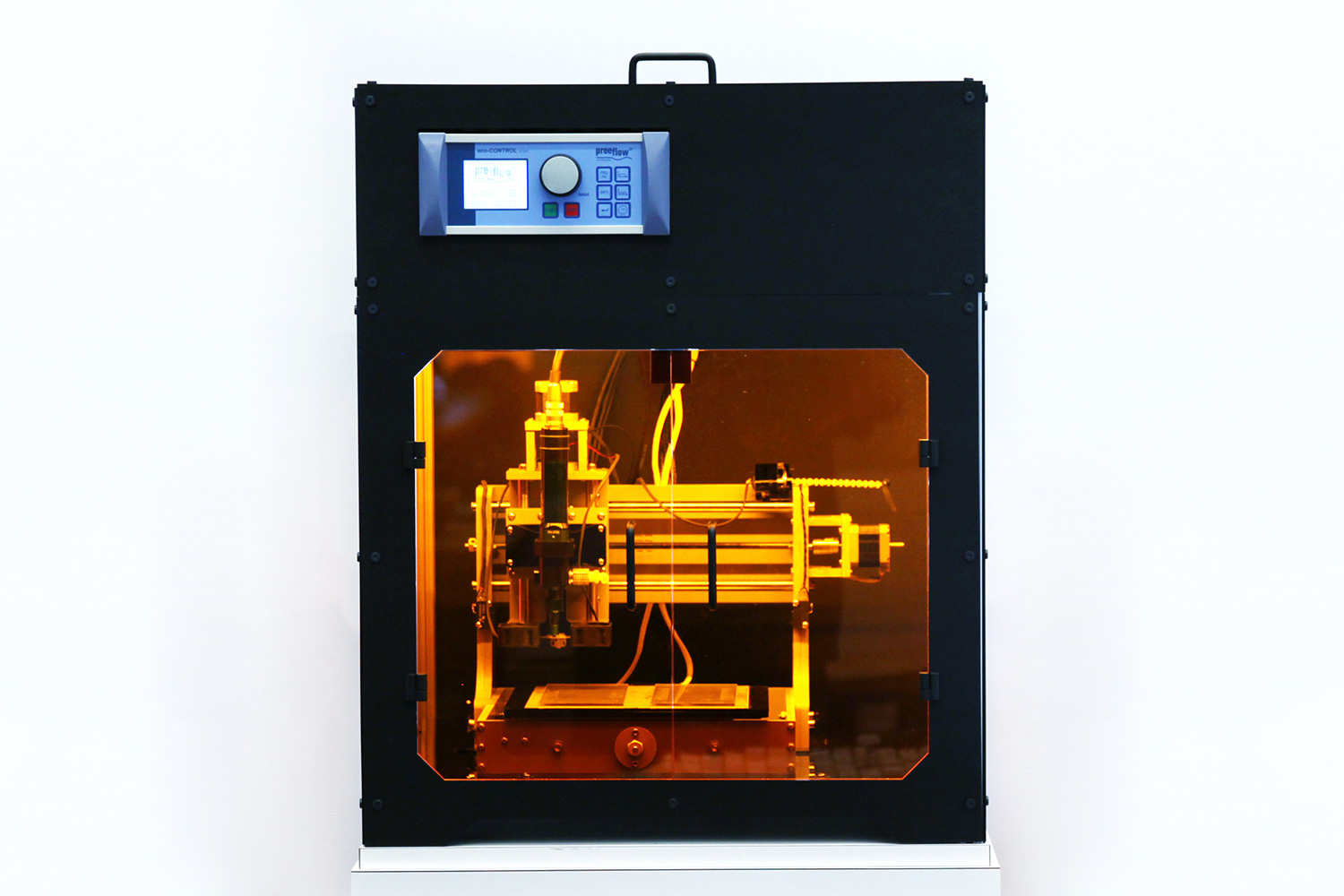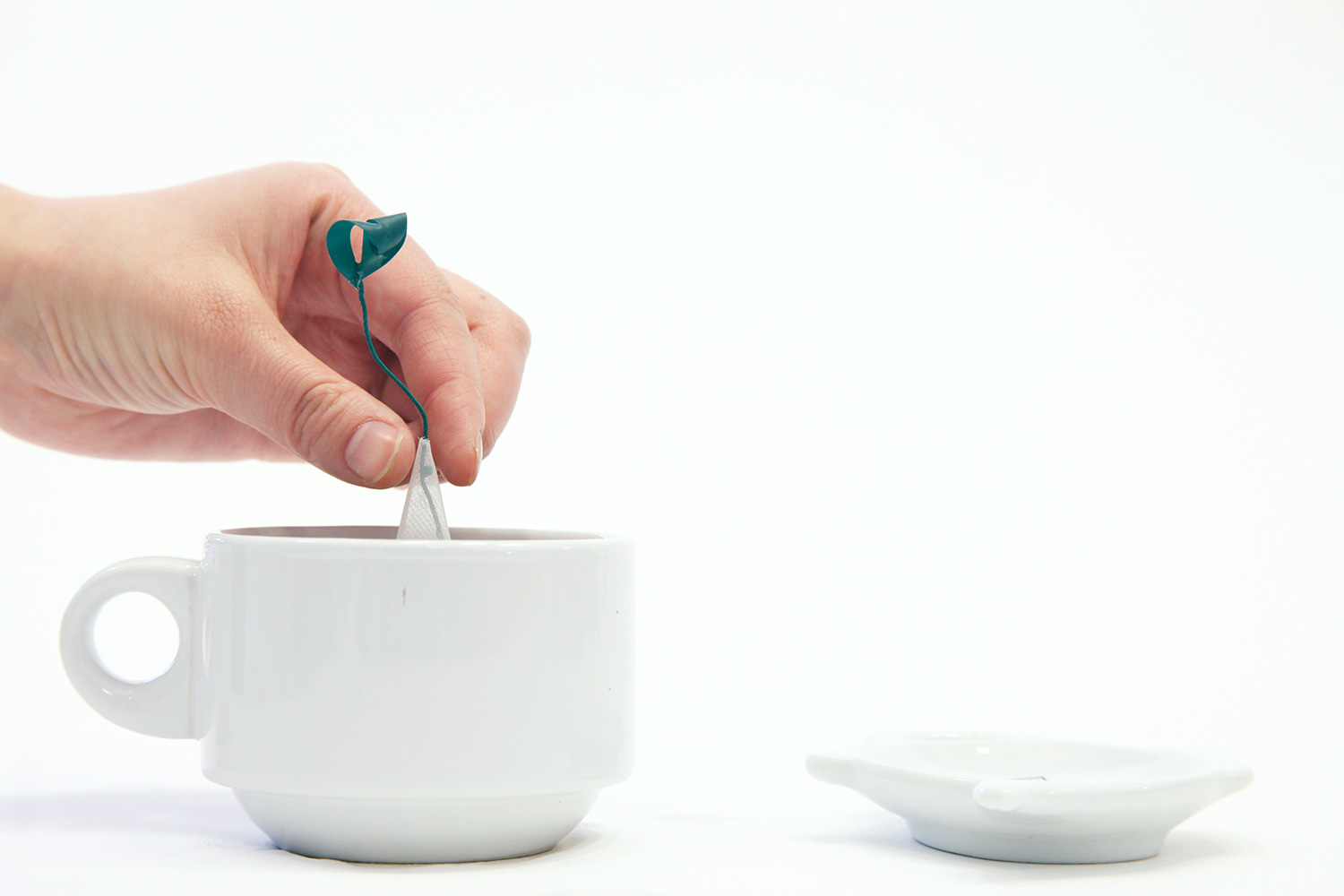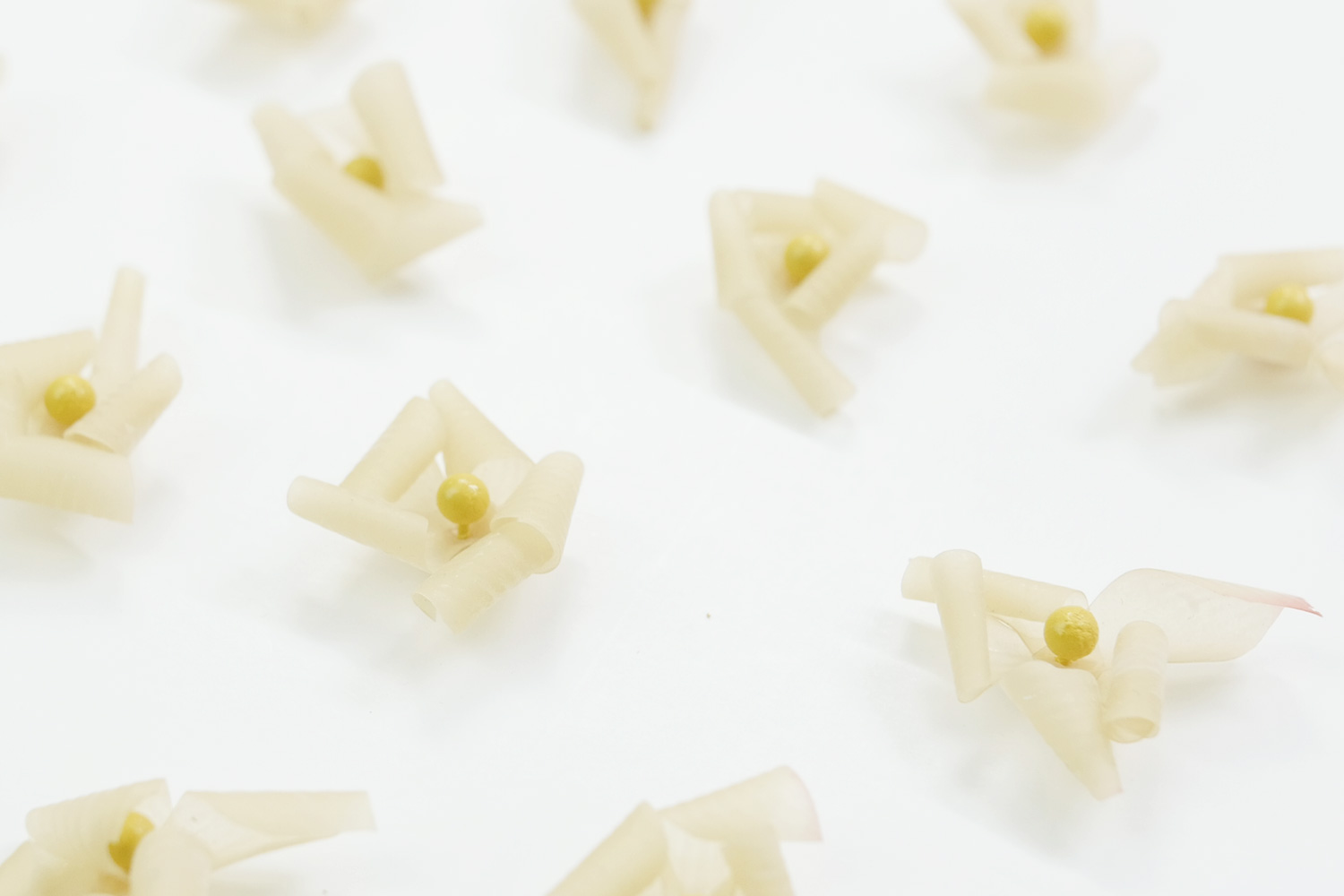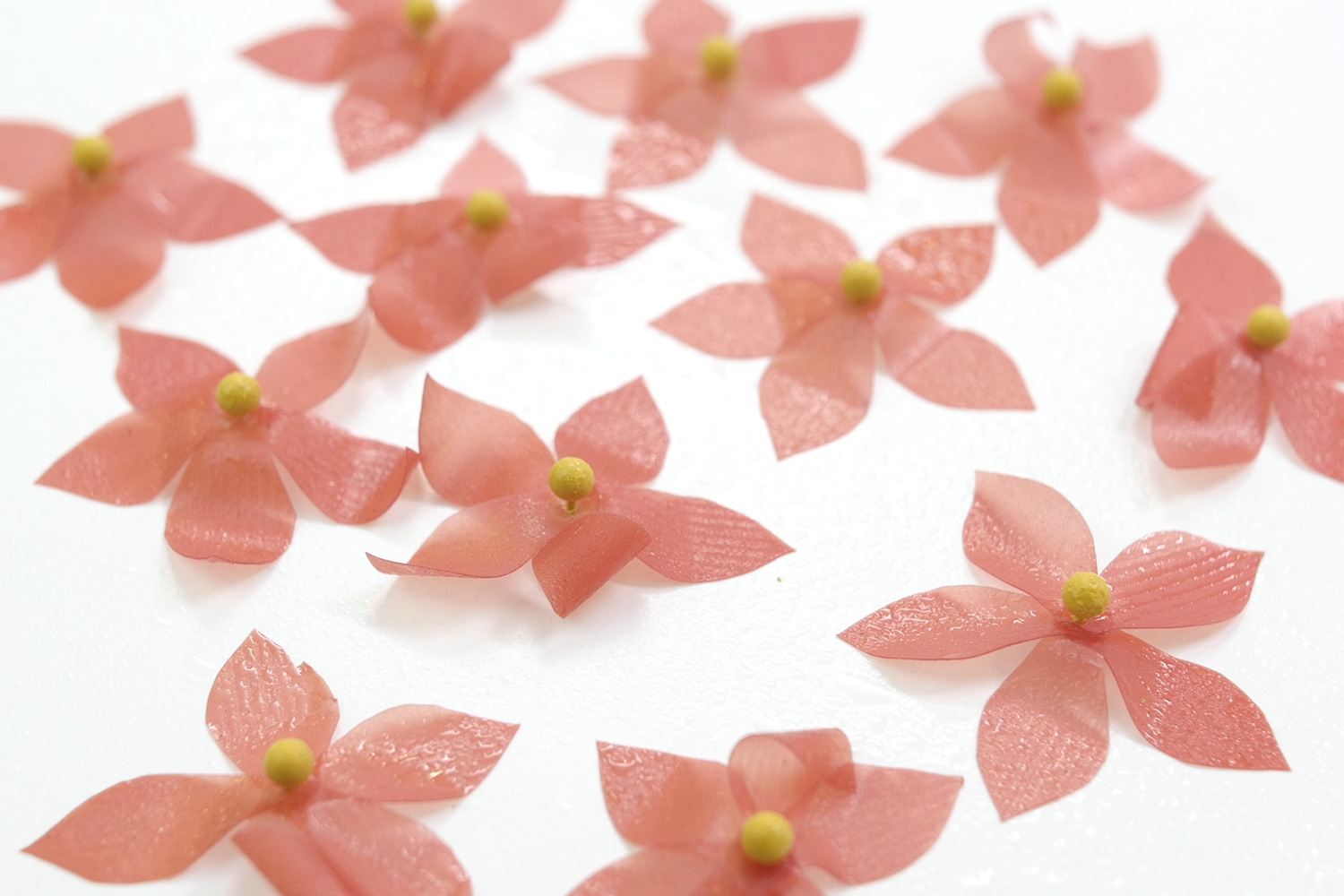MIT Media Lab’s Tangible Media Group is pioneering the BioLogic research into bacillus subtilis natto and its real world applications. The bacterium is commonly used in Japanese cooking, particularly in a popular dish called nattō. But BioLogic says inspiration for its product came from an Japanese myth about a samurai who discovered the bacteria living in dry rice stalks, which at that time were used to weave bags for transporting soybeans and other dry products.
Manipulating the natto cells allows the BioLogic team to create varying effects in the textiles created with a layer of the bacteria. The process involves printing layers of natto-imbued biofilm onto spandex. Patterns and designs in the placement of individual natto cells creates a range of effects as the fabric interacts with the wearer’s humidity levels from factors like internal temperature and body sweat or external humidity levels and weather changes.
Versions of the biofilm printed with straight-cut lines of natto cells will fold up sharply when exposed to humidity, and a more uniform application of the cells allows the fabric to curl up in a more organic-looking pattern. All of these effects are attributable to the living, adaptable qualities of the natto cells. As humidity levels increase, an individual natto cell can expand so much that its size increases by up to 50 percent. In their partnership with New Balance and fashion designers from the Royal College of Art, the BioLogic team has created a collection of activewear that shifts with the wearer’s experience.
In apparel created with BioLogic’s biofilm spandex material, a 100 percent humidity level would cue the natto cells to curl open strategically placed flaps, creating breathability and a sort of biotech cool-down system in the clothing. The BioLogic team has their sights set on manipulating bio-enabled fabrics for further applications.
Naturally adaptable cell structures that interact with their surroundings create enormous opportunities for development that BioLogic believes are unique to organic technology: “Bio is the new interface. We are imagining a world where actuators and sensors can be grown rather than manufactured, being derived from nature as opposed to engineered in factories.” If BioLogic is any sign of the times, we may be wearing living clothing alongside our tech-enabled apparel sooner rather than later.
